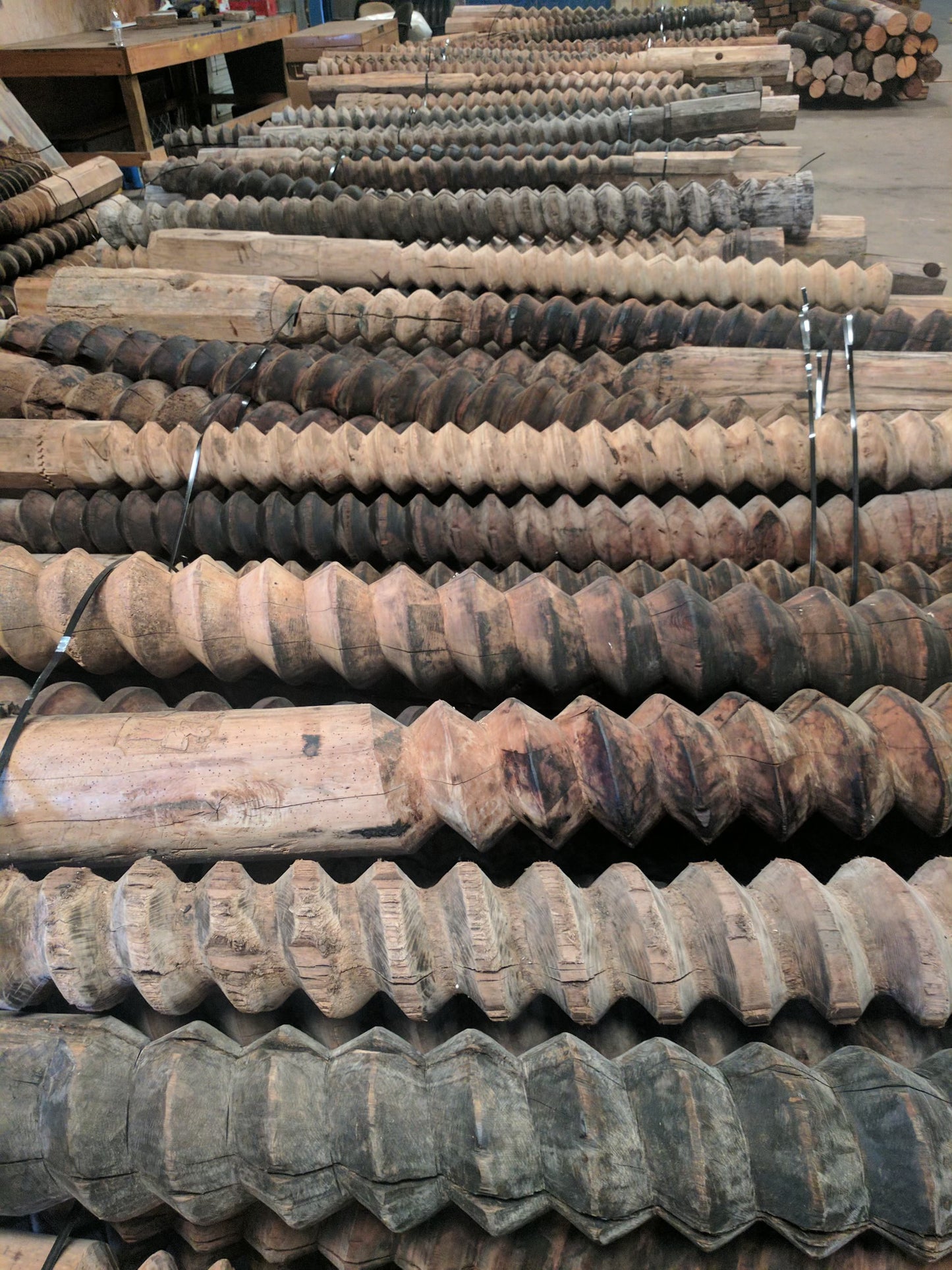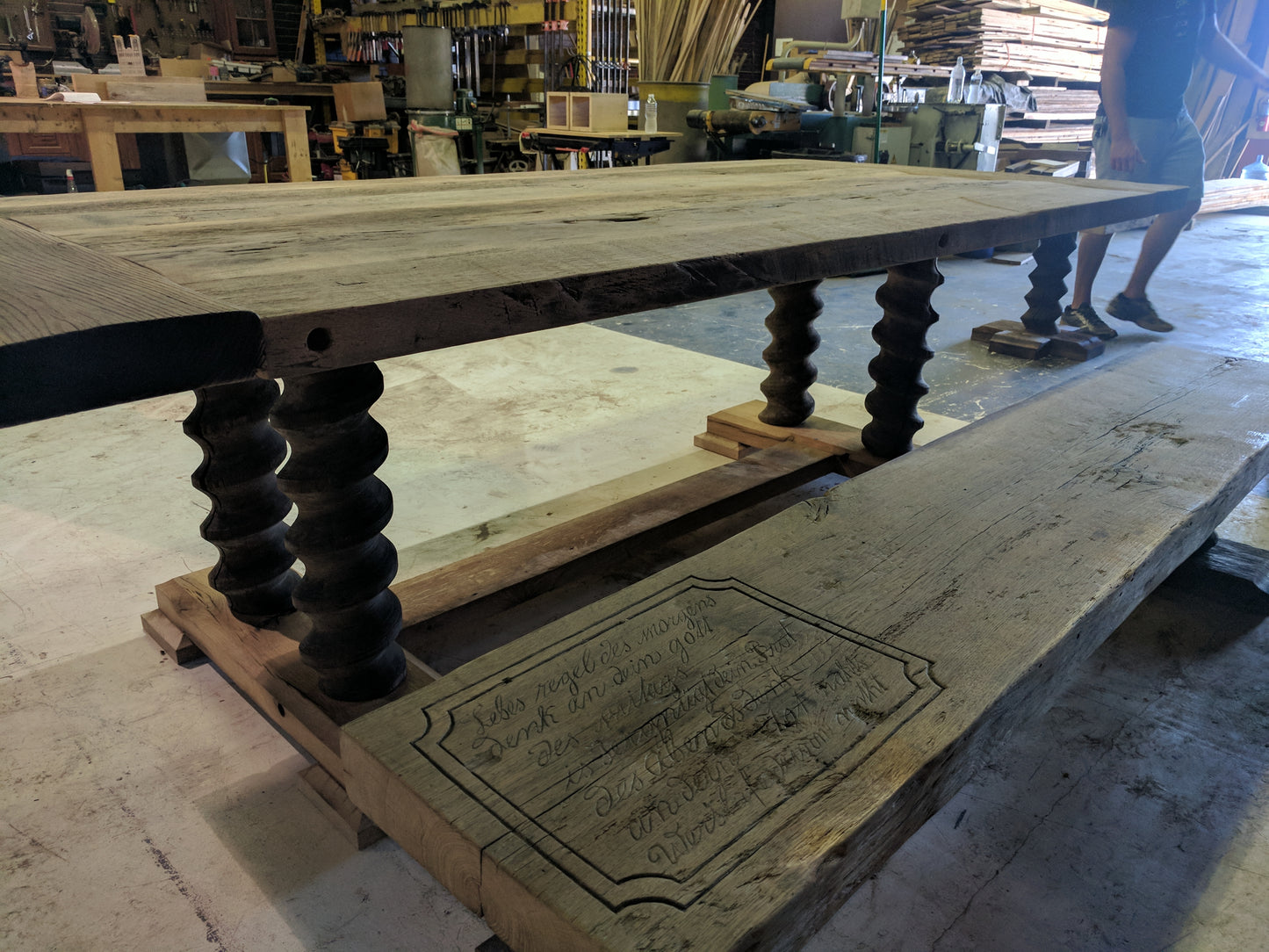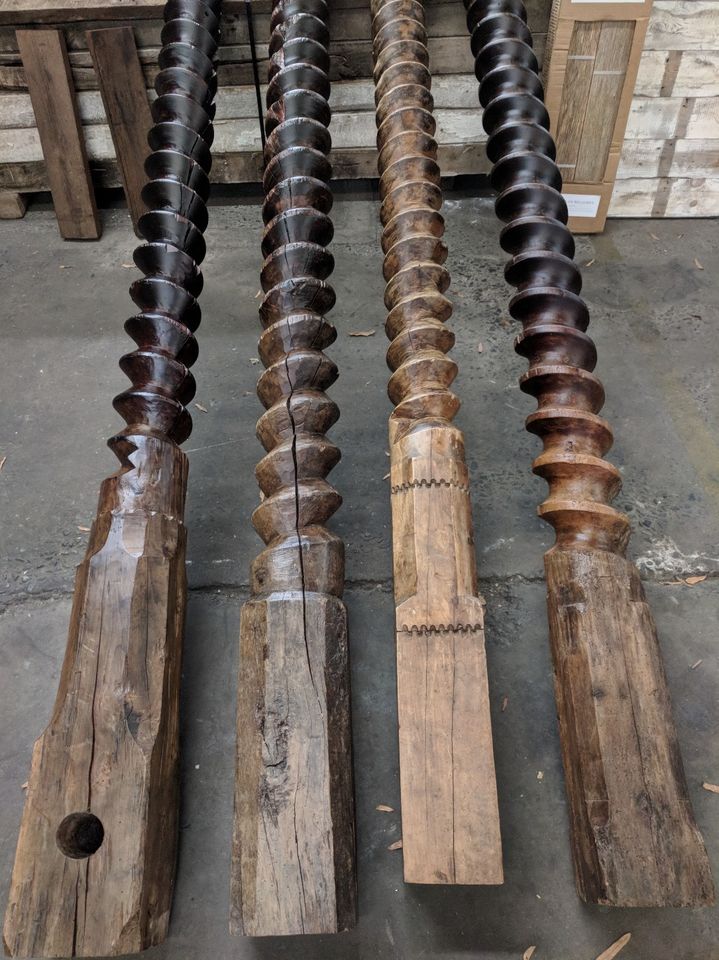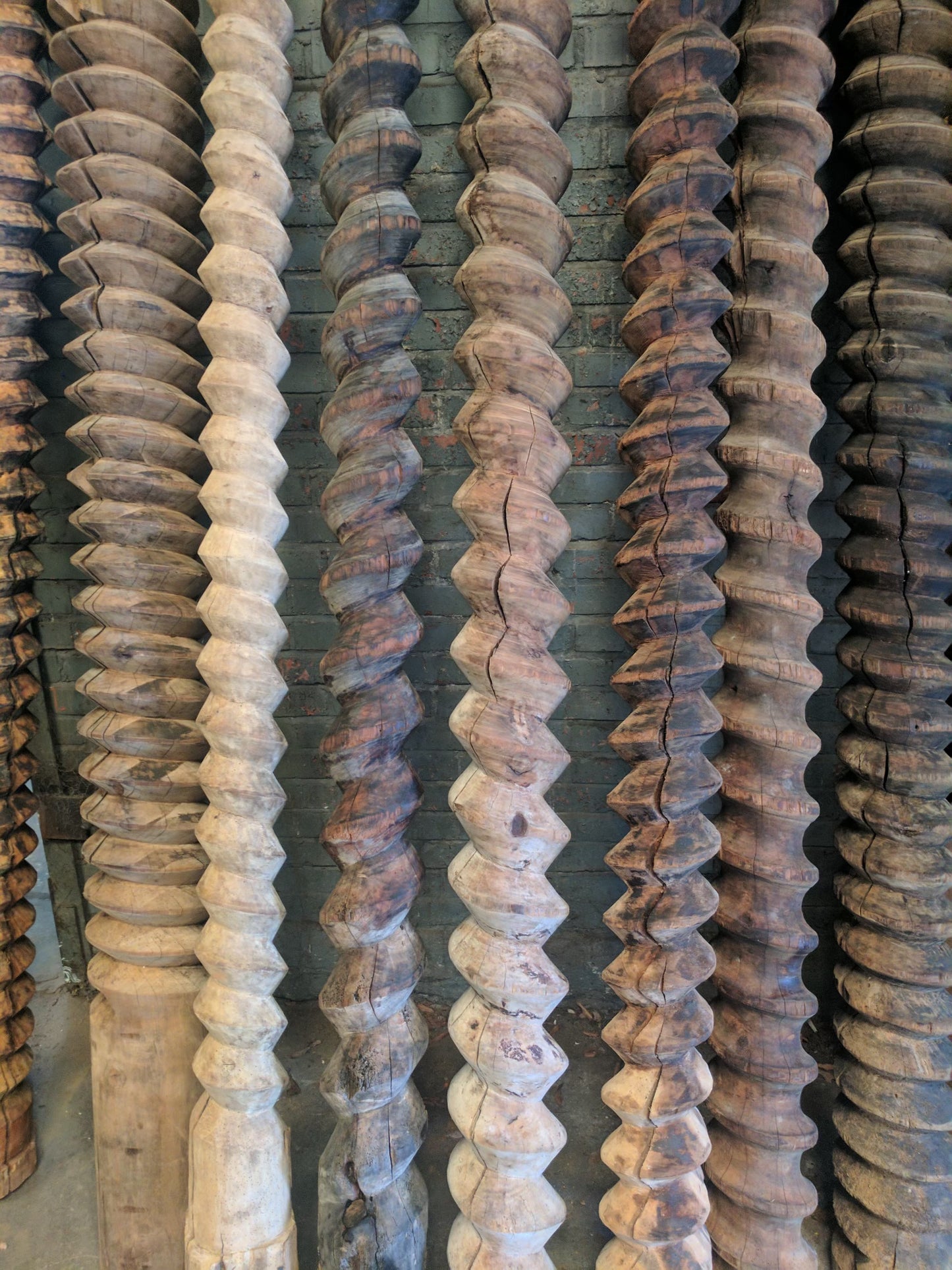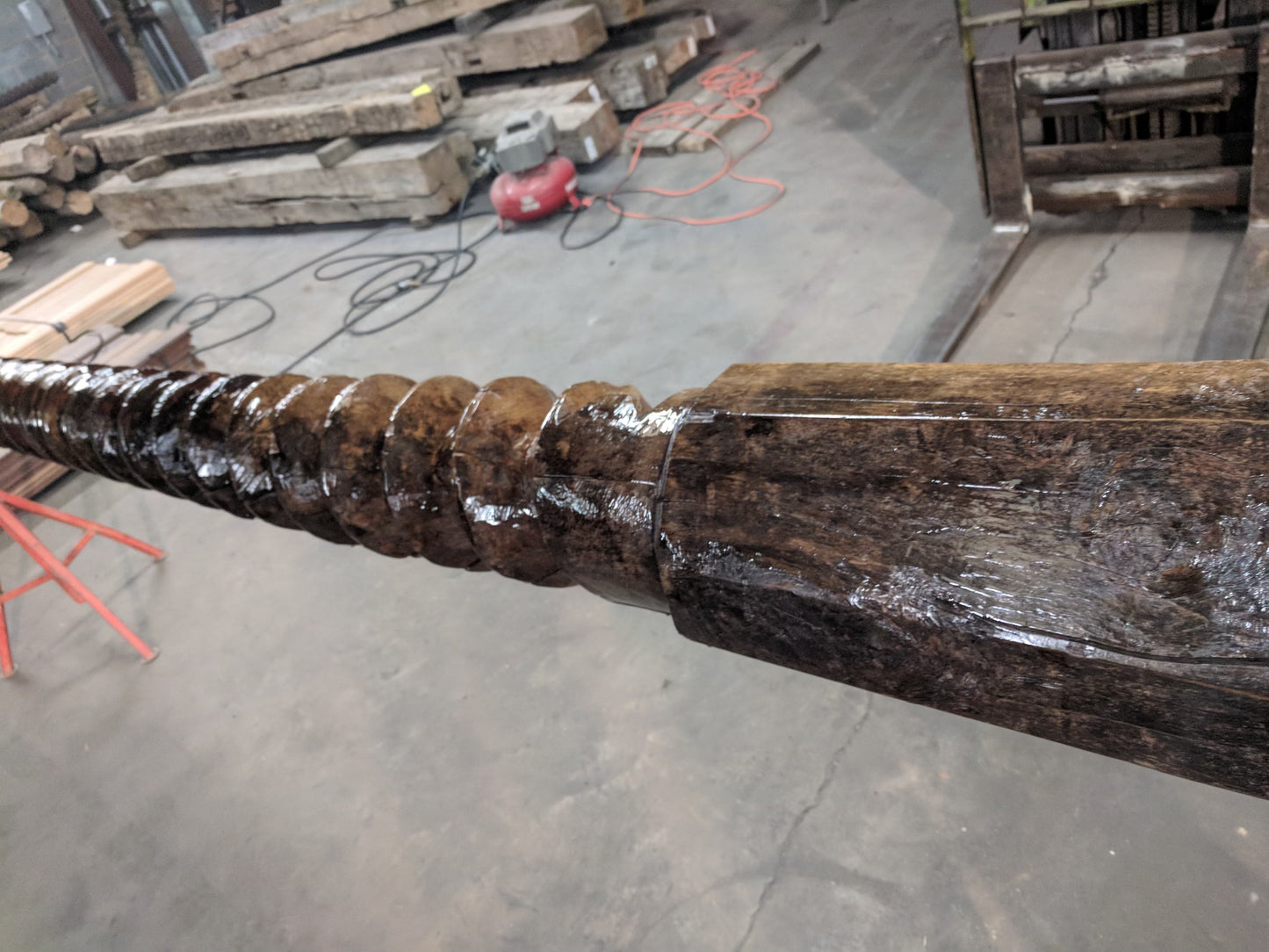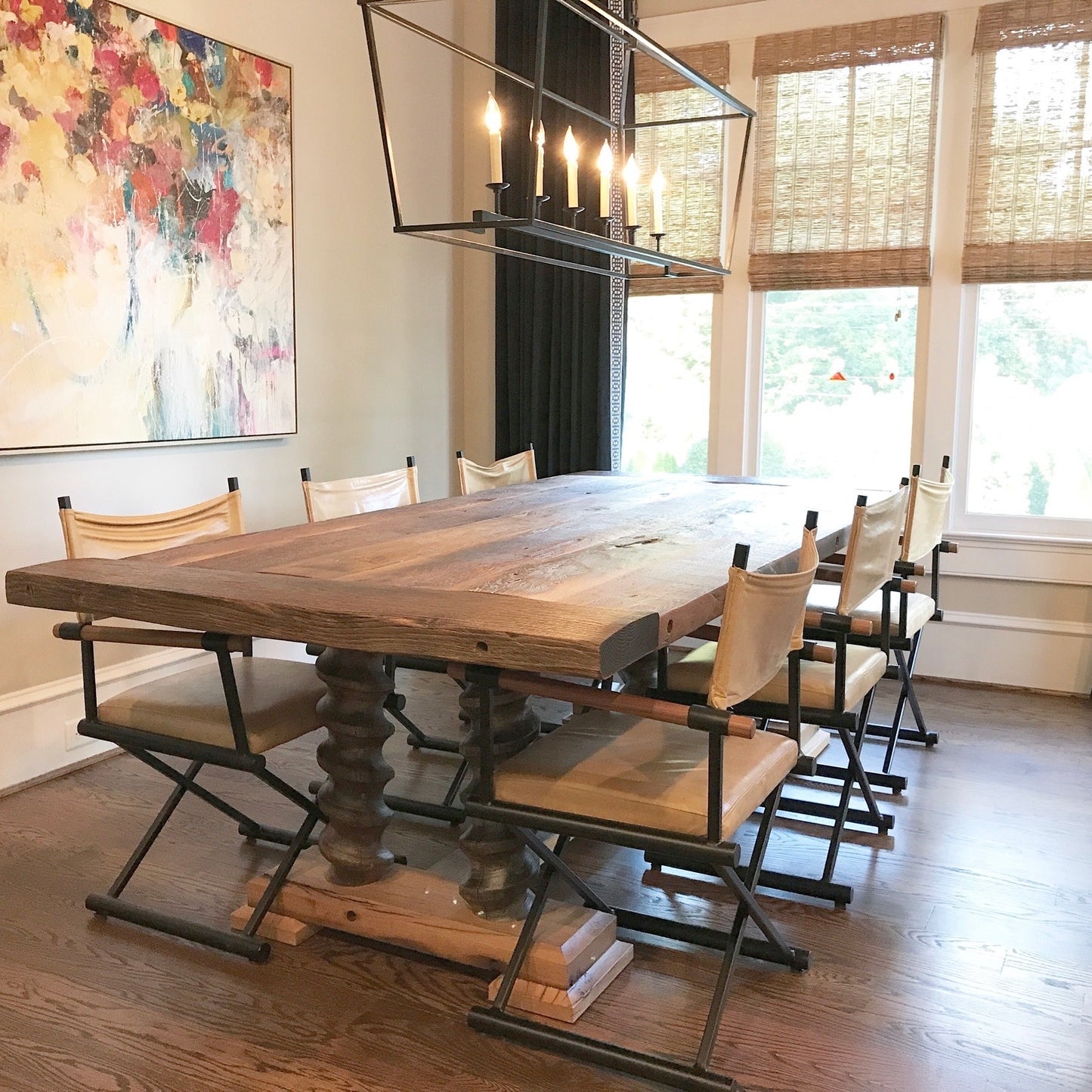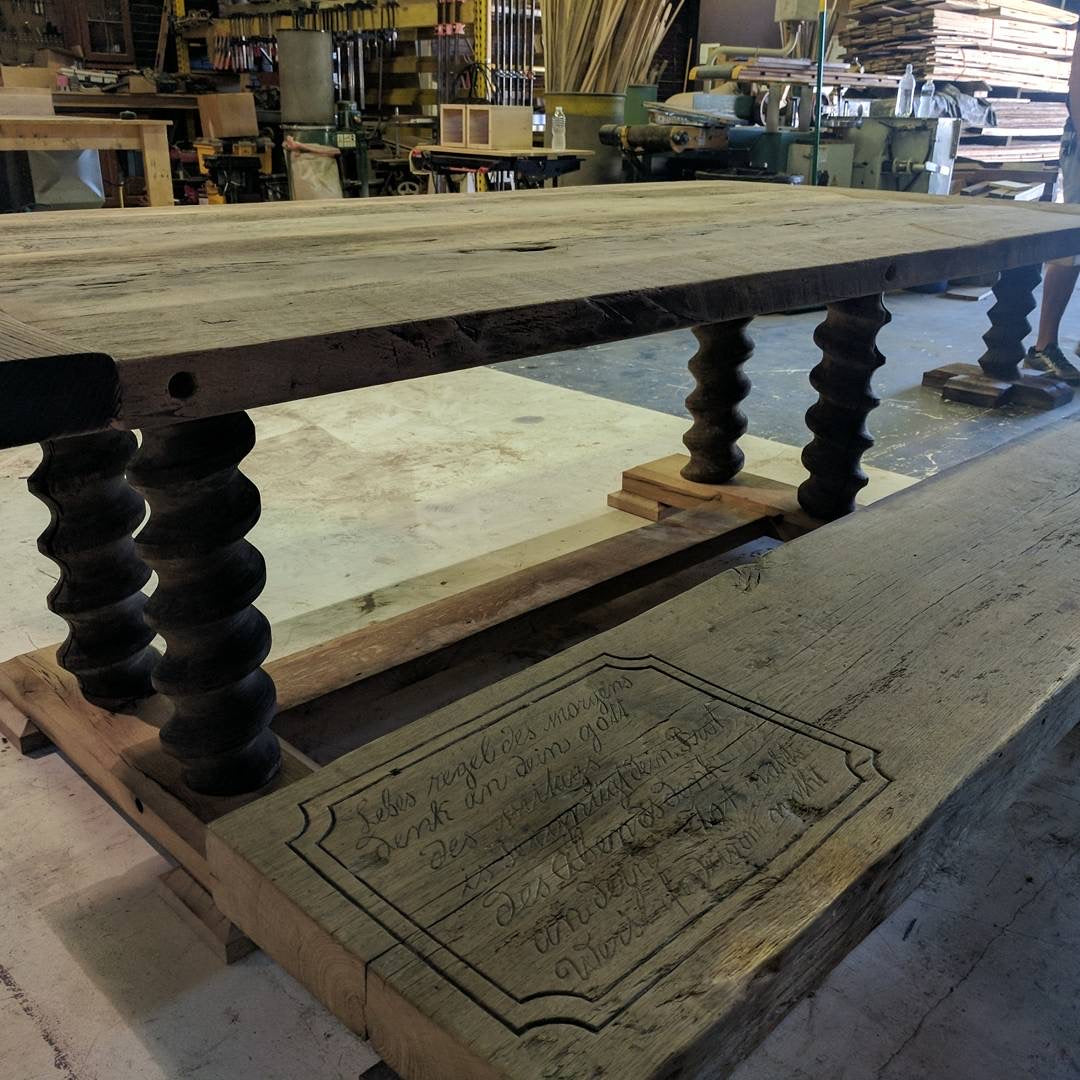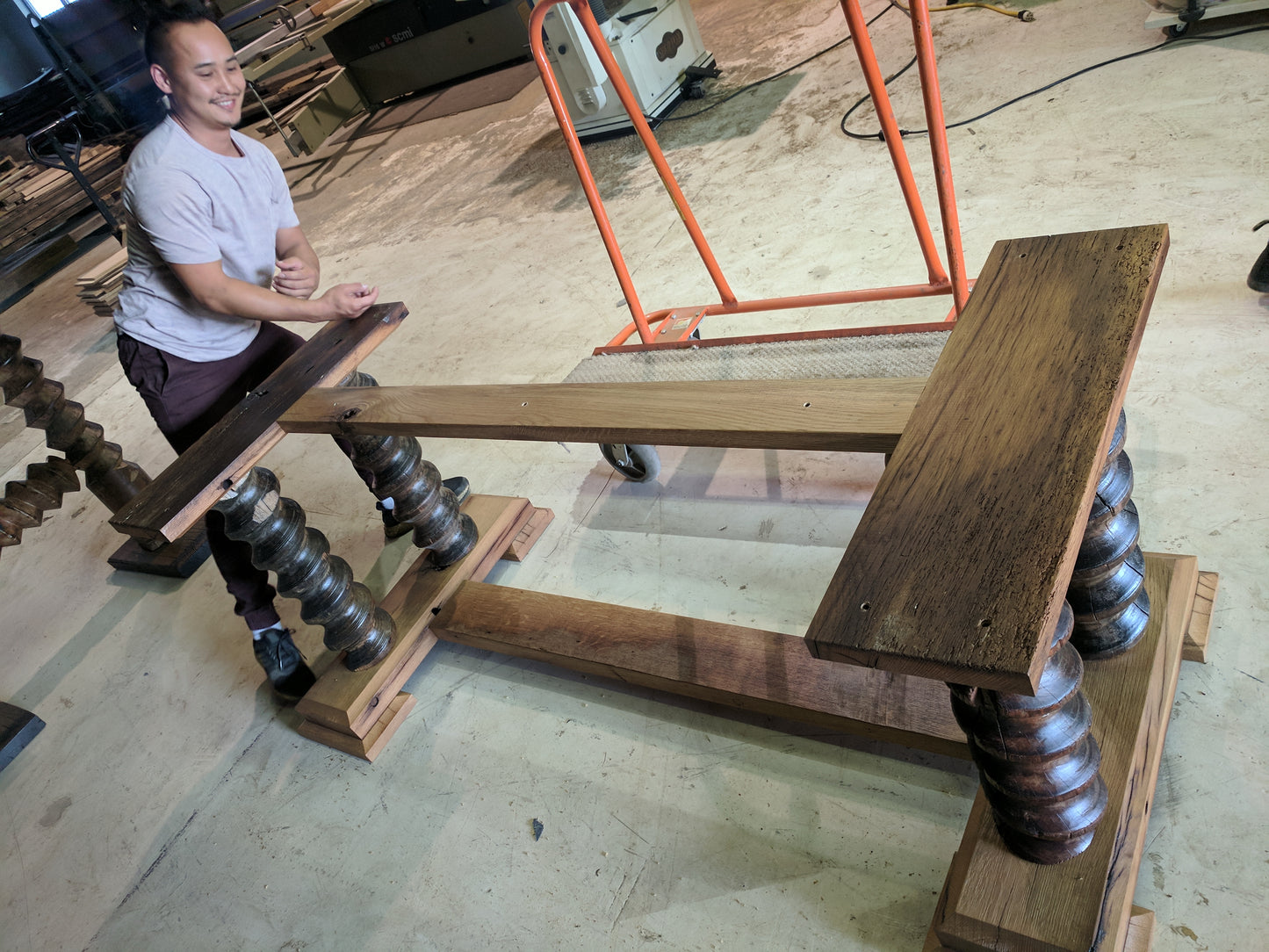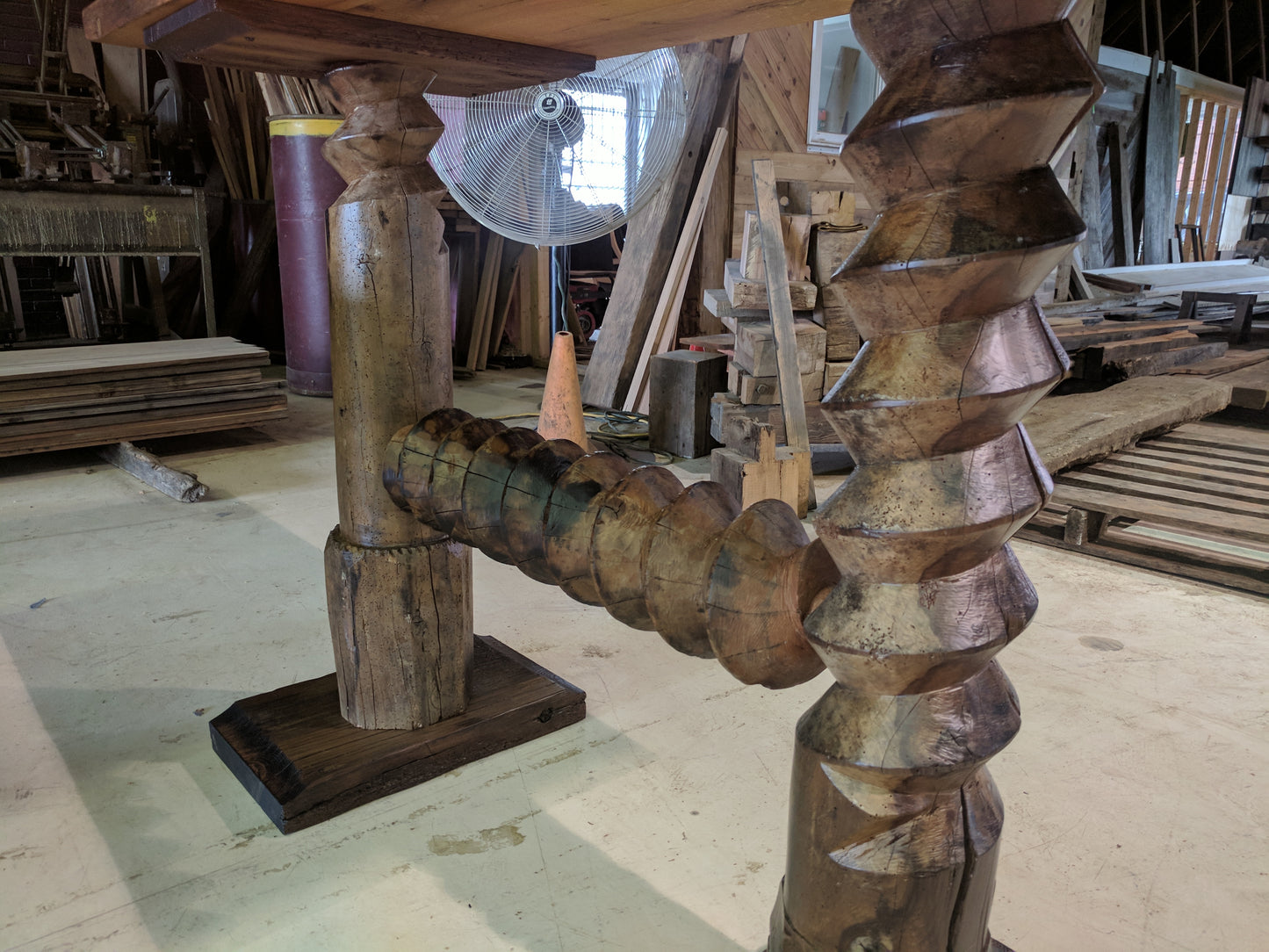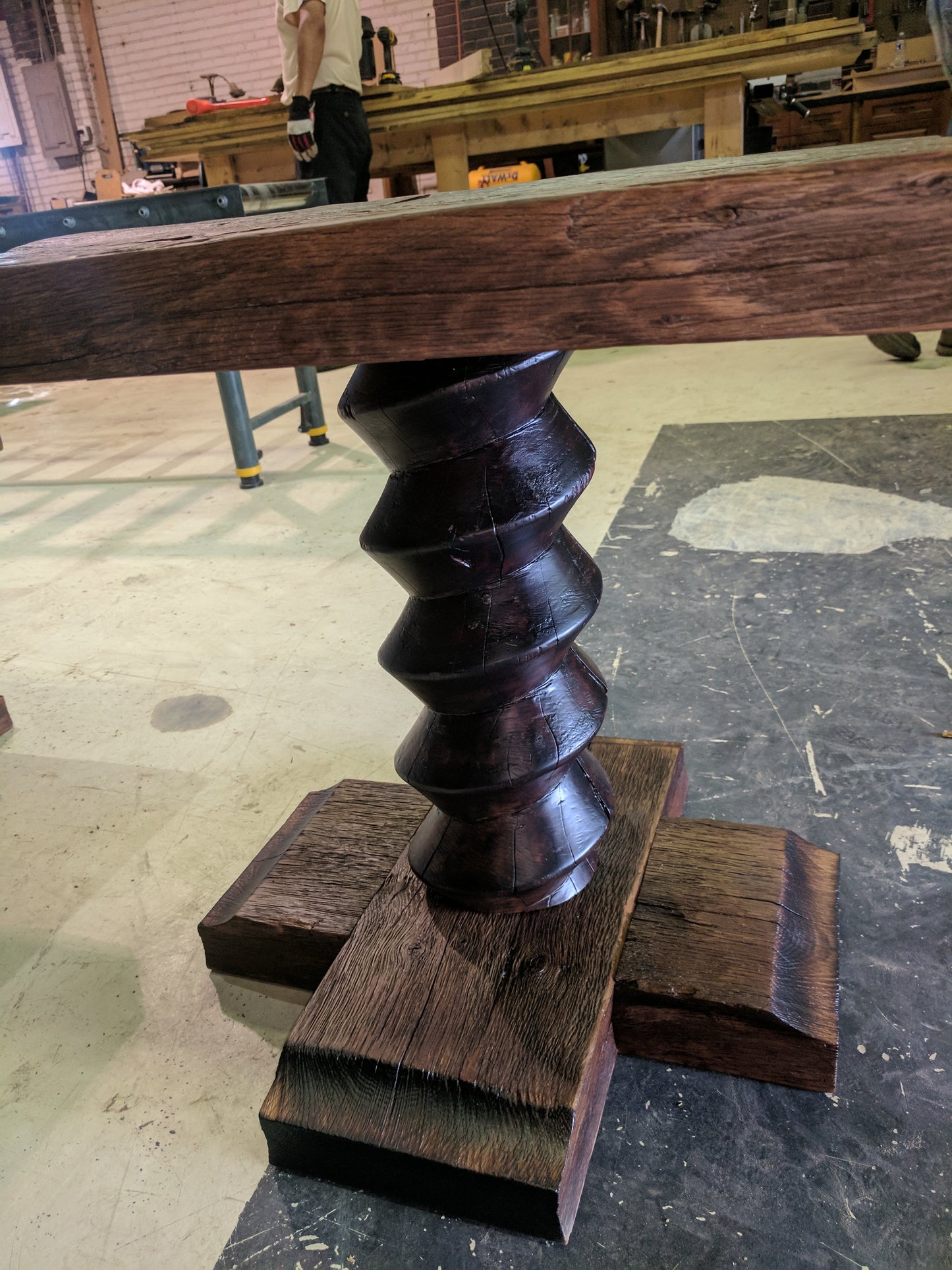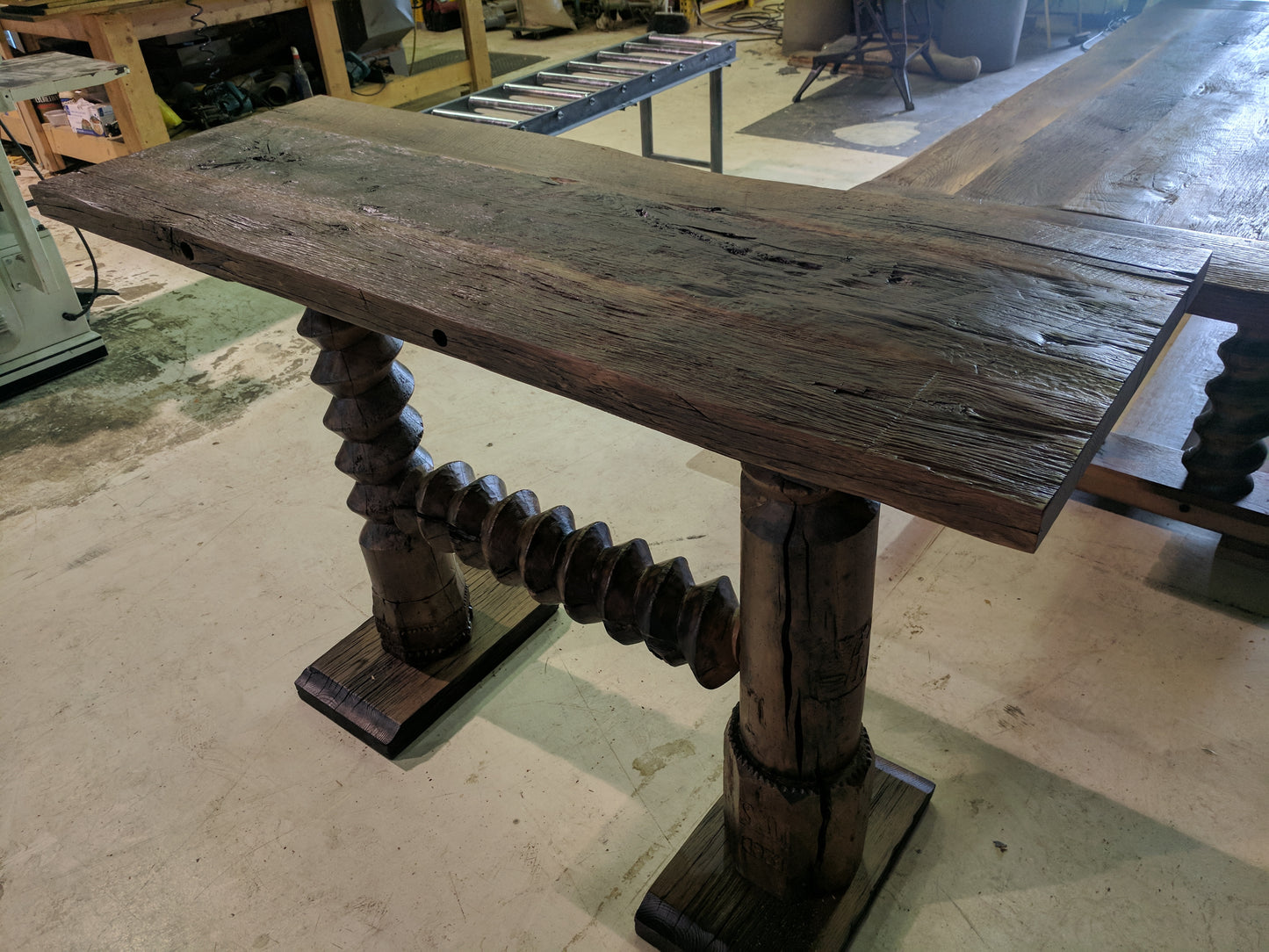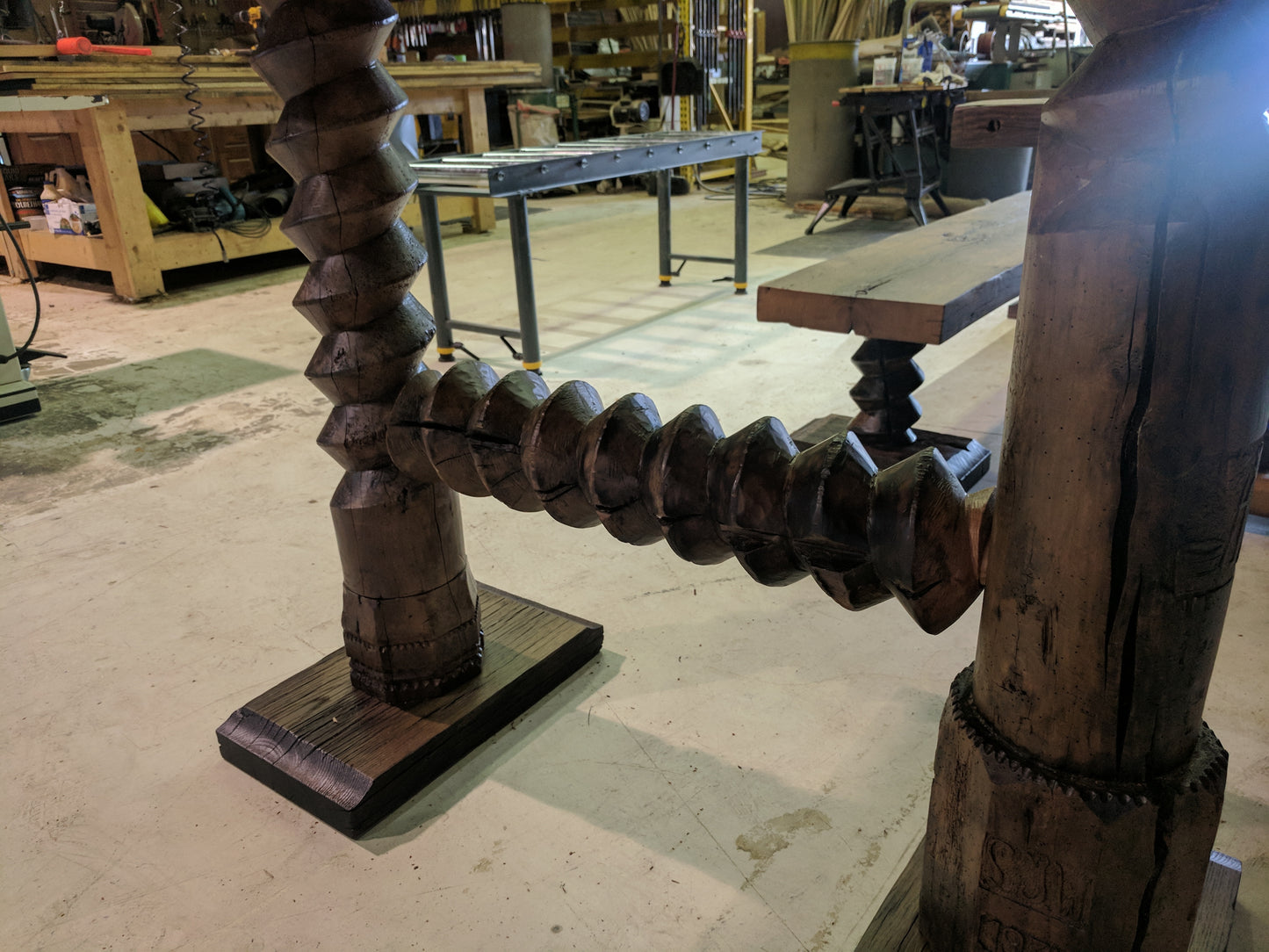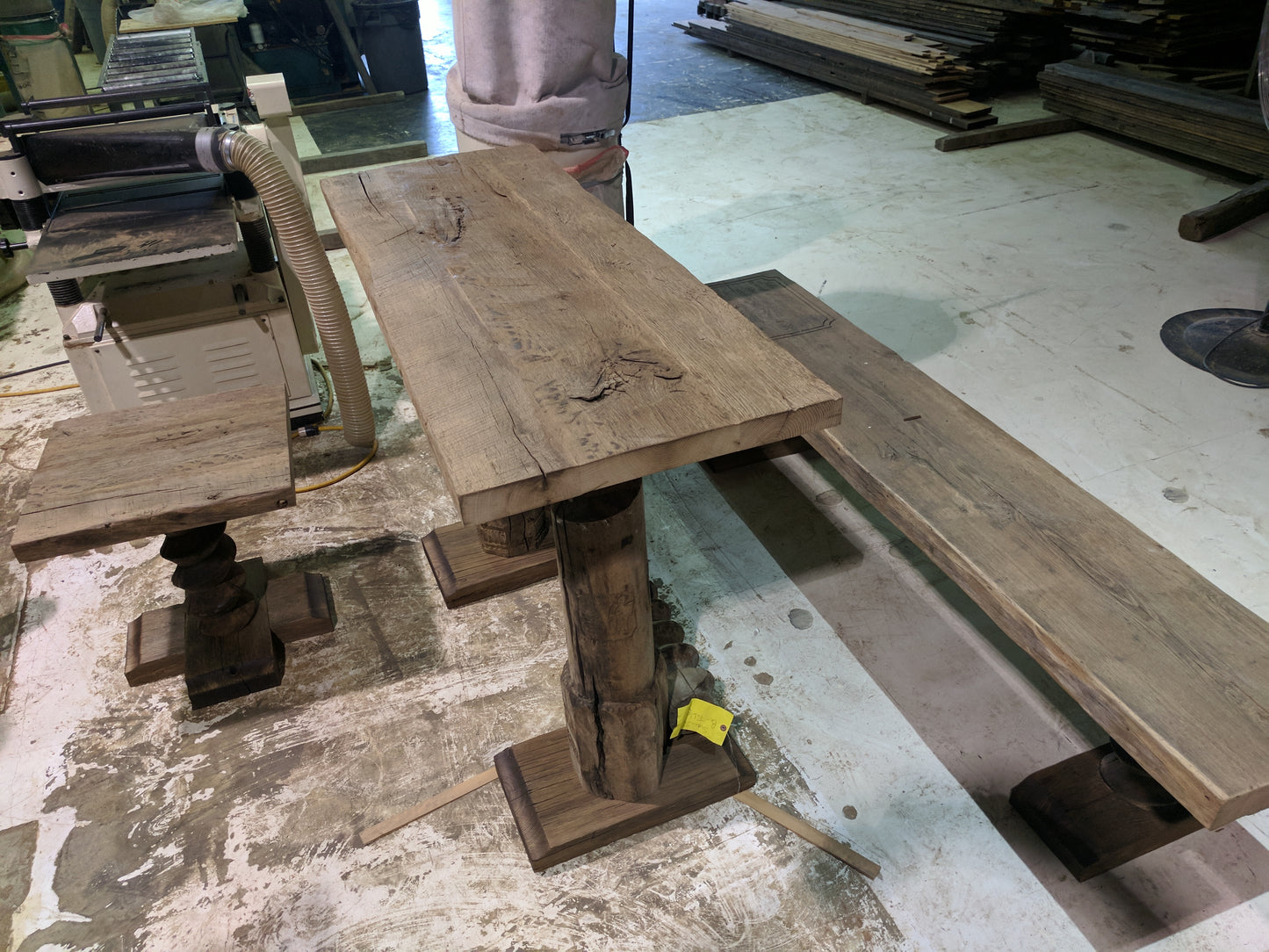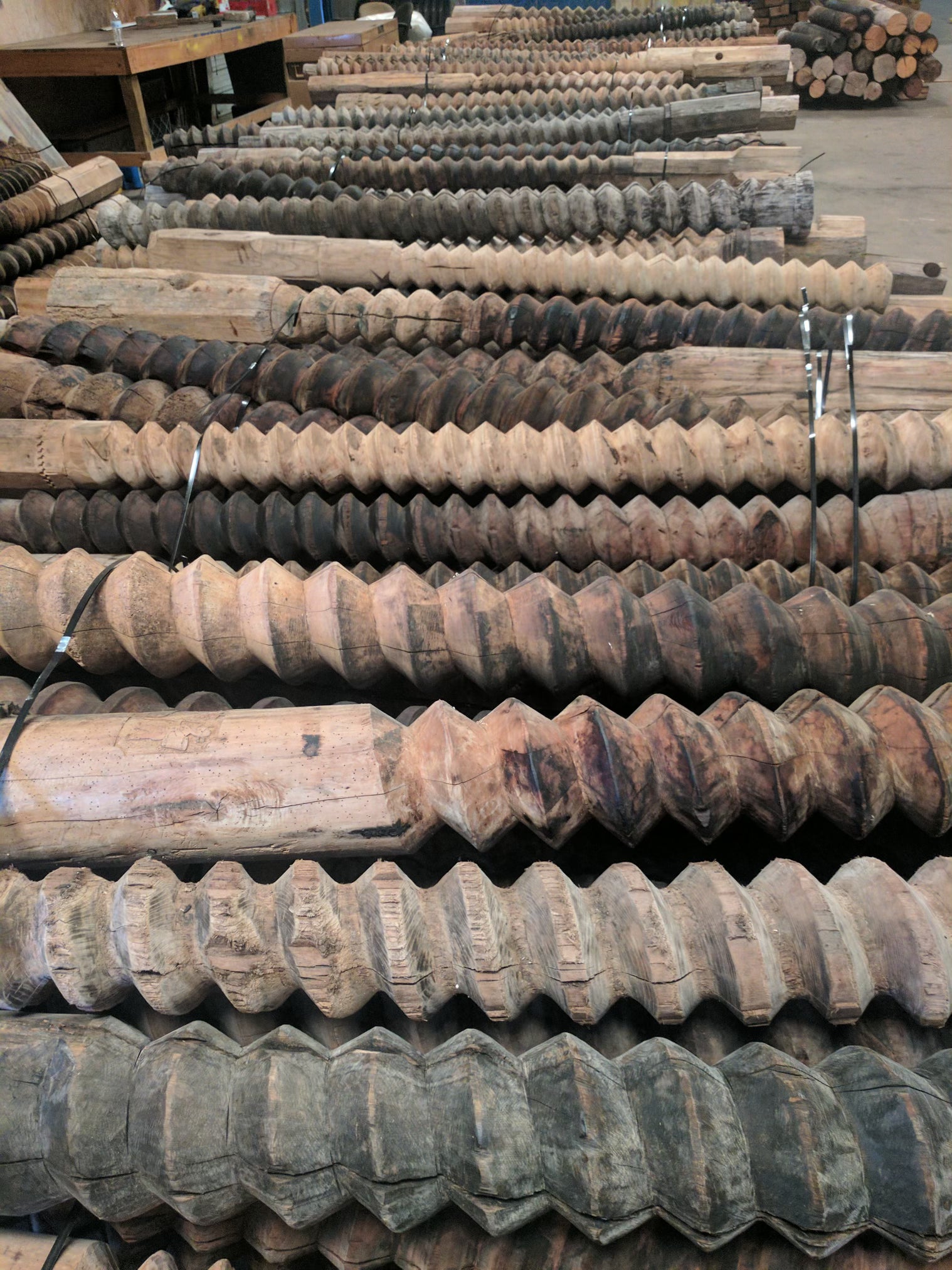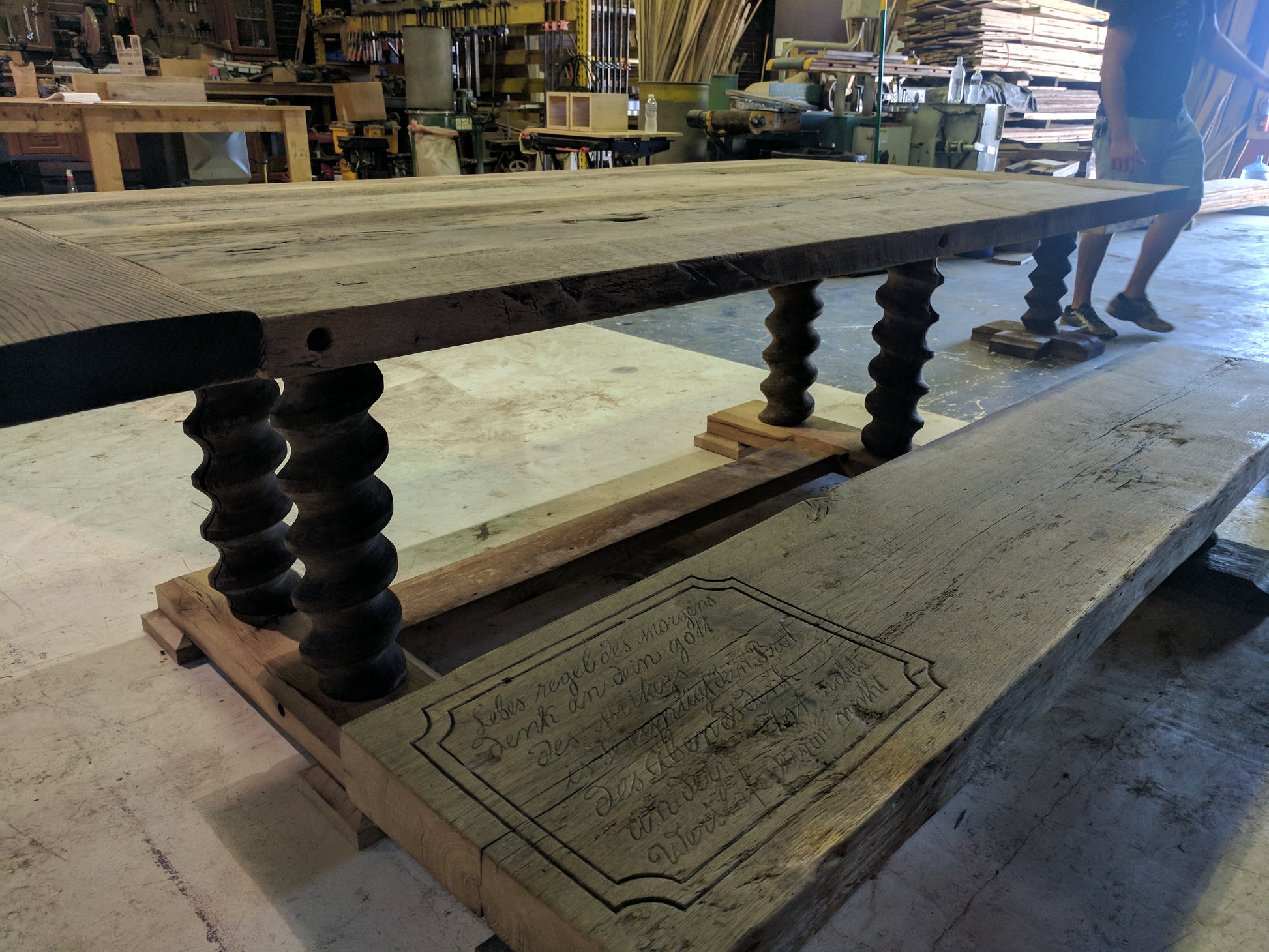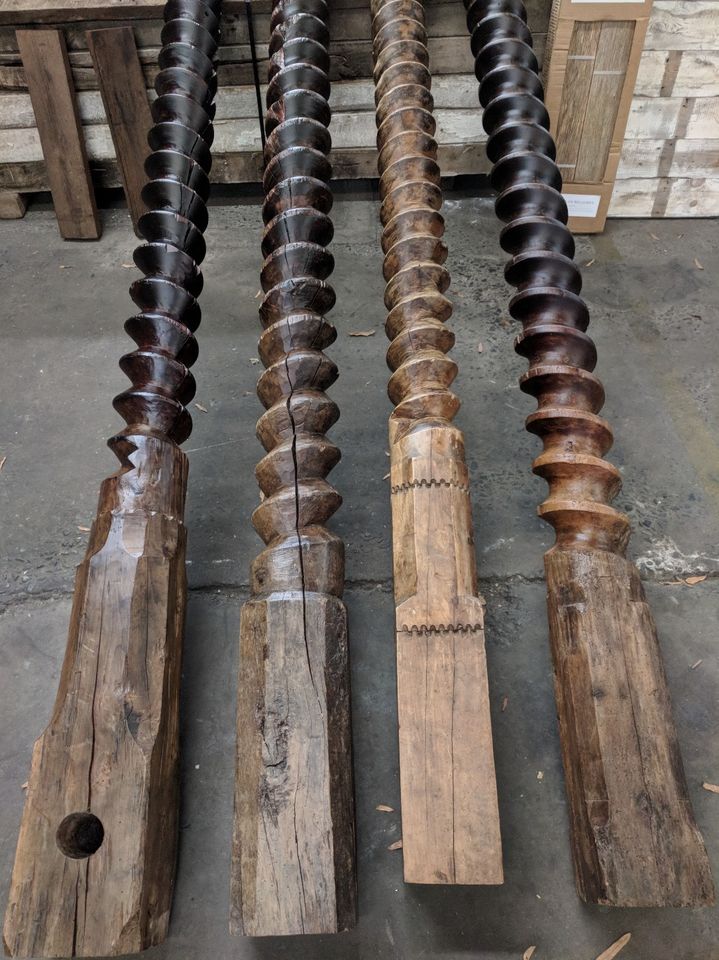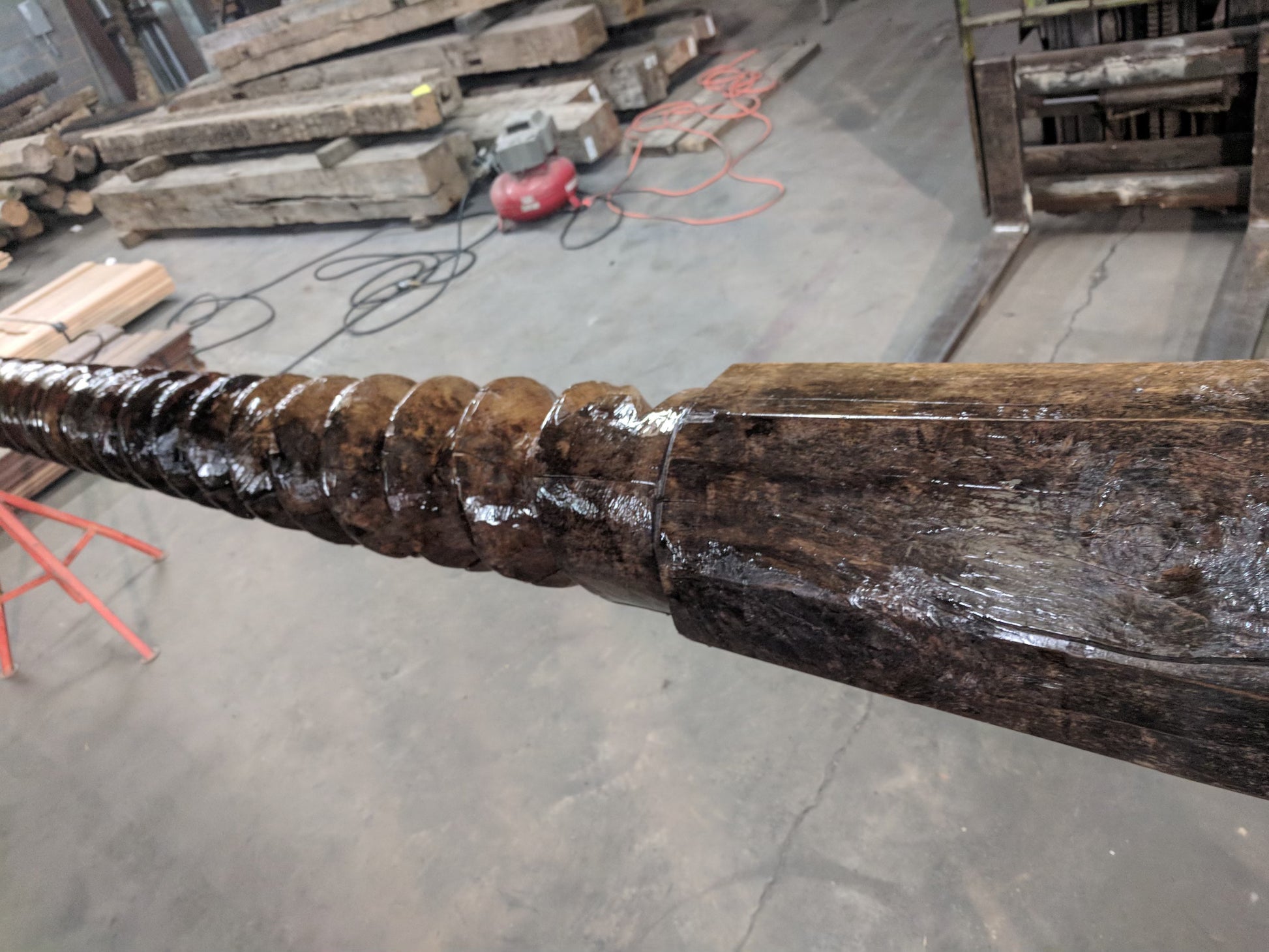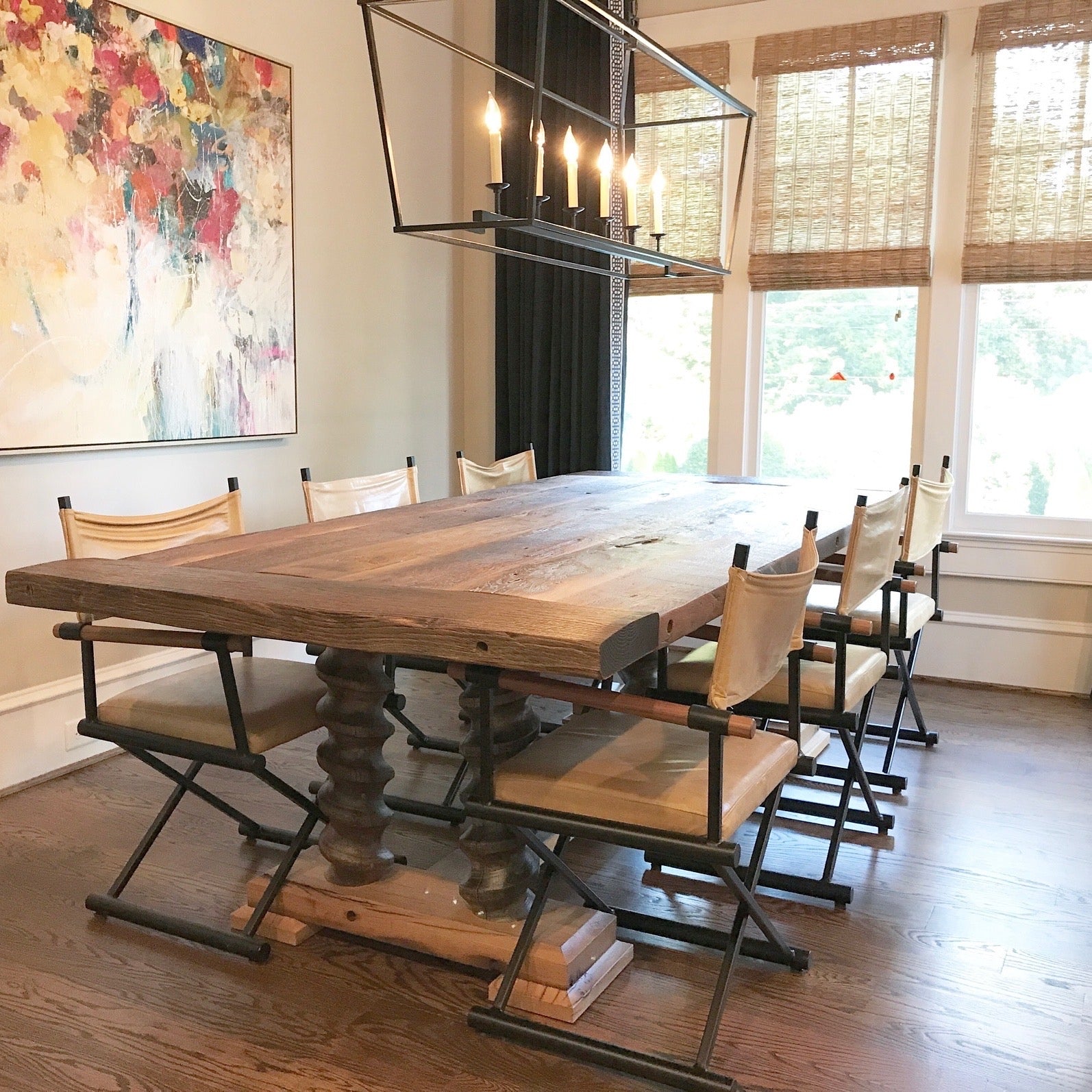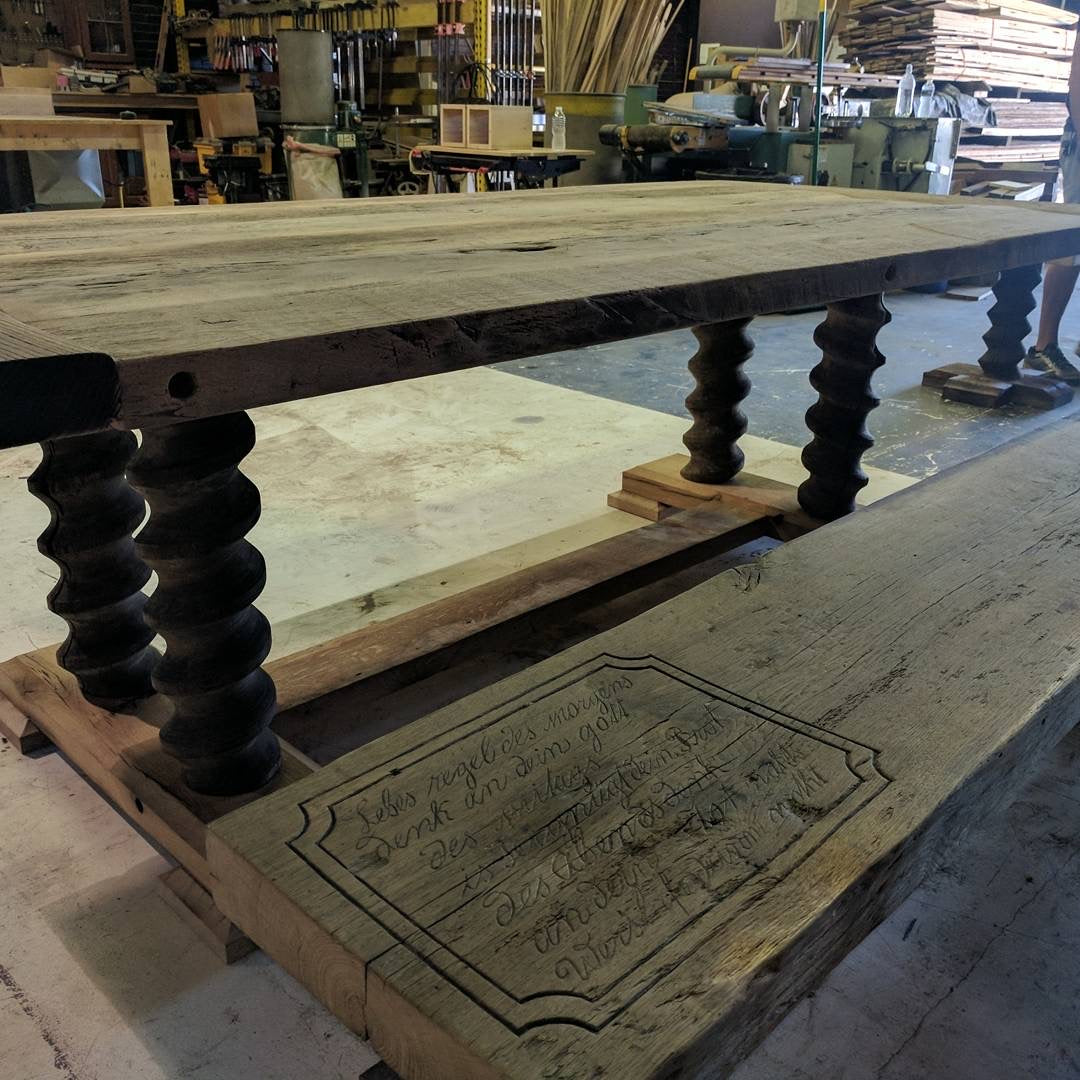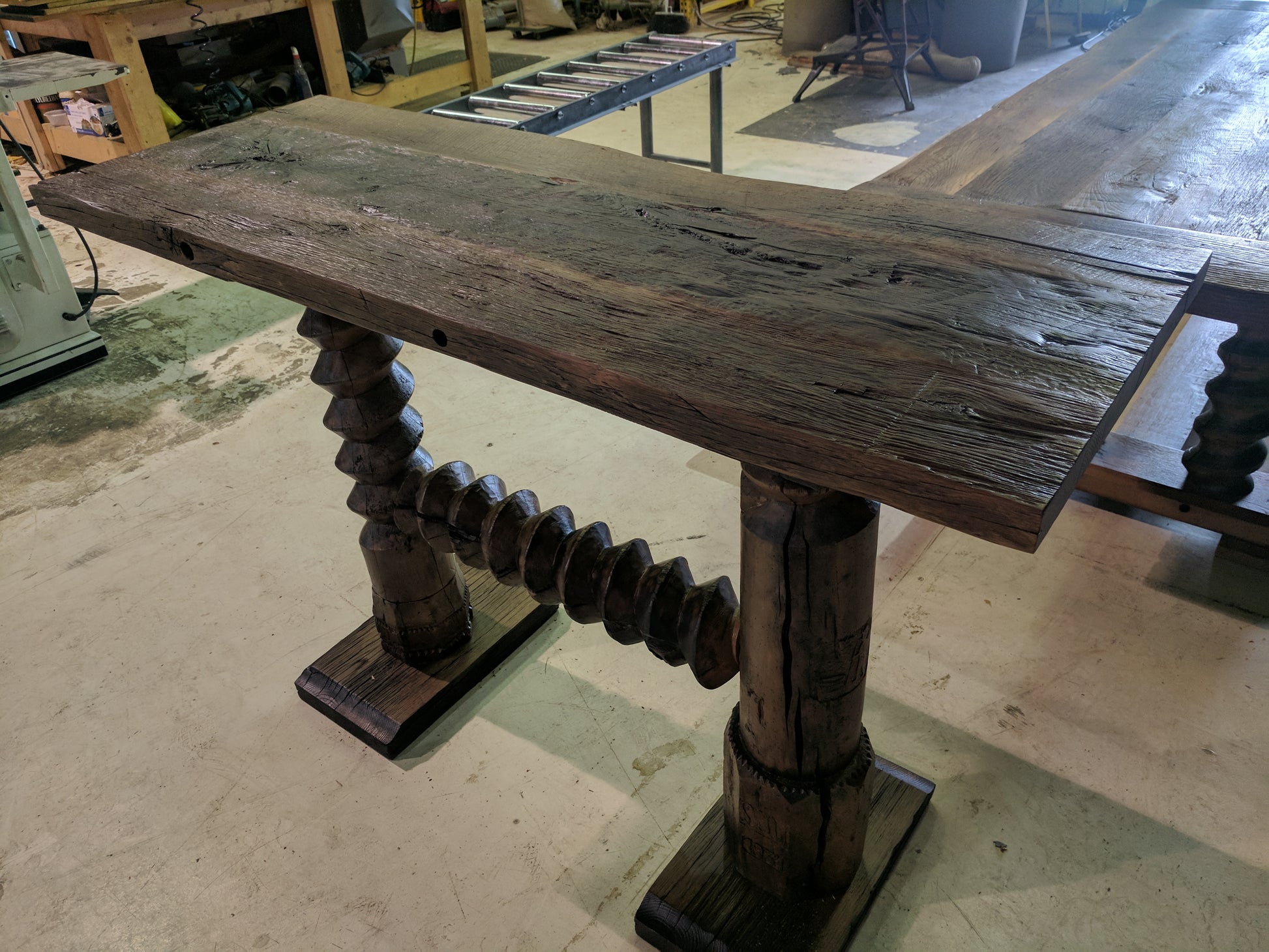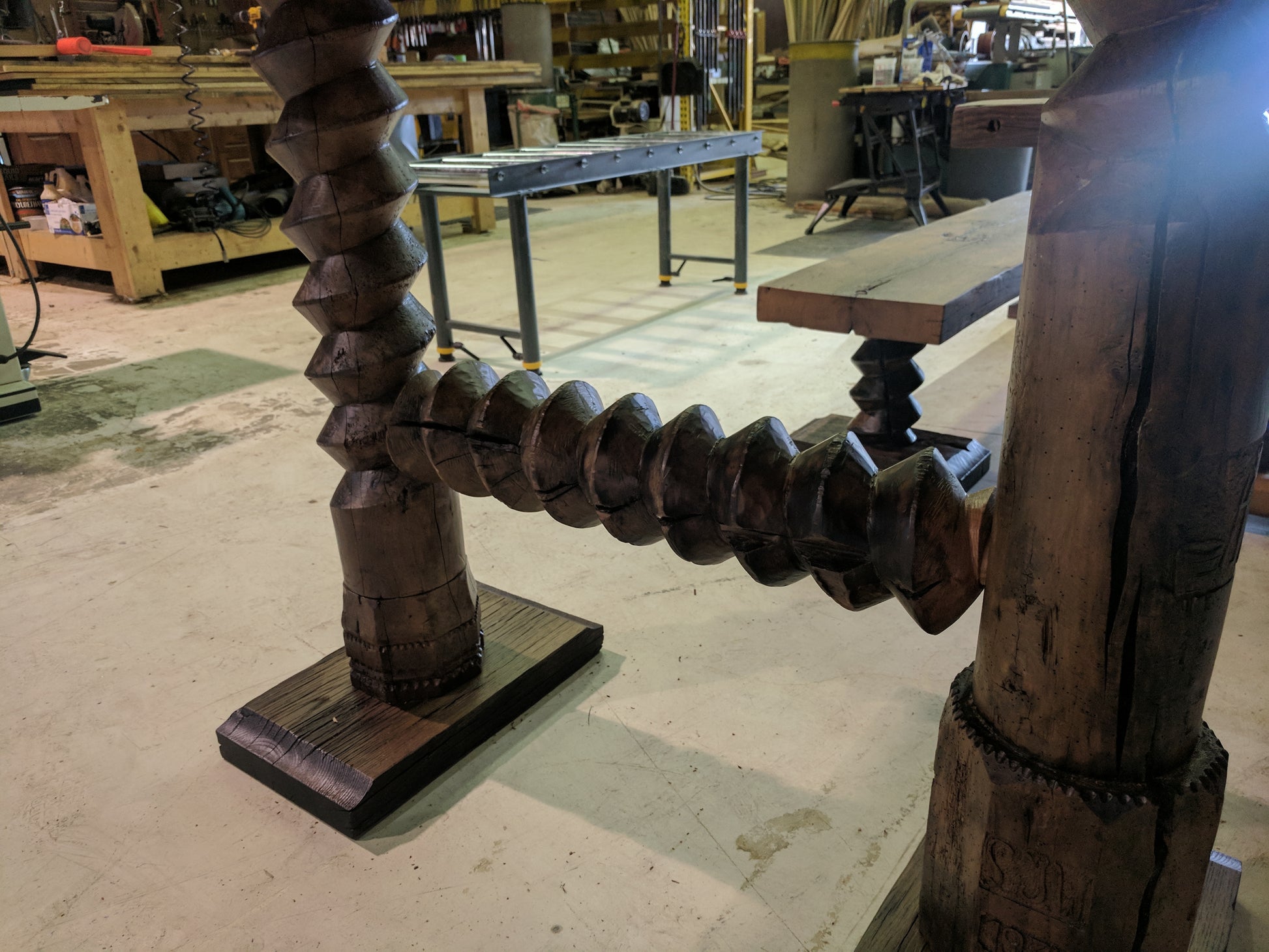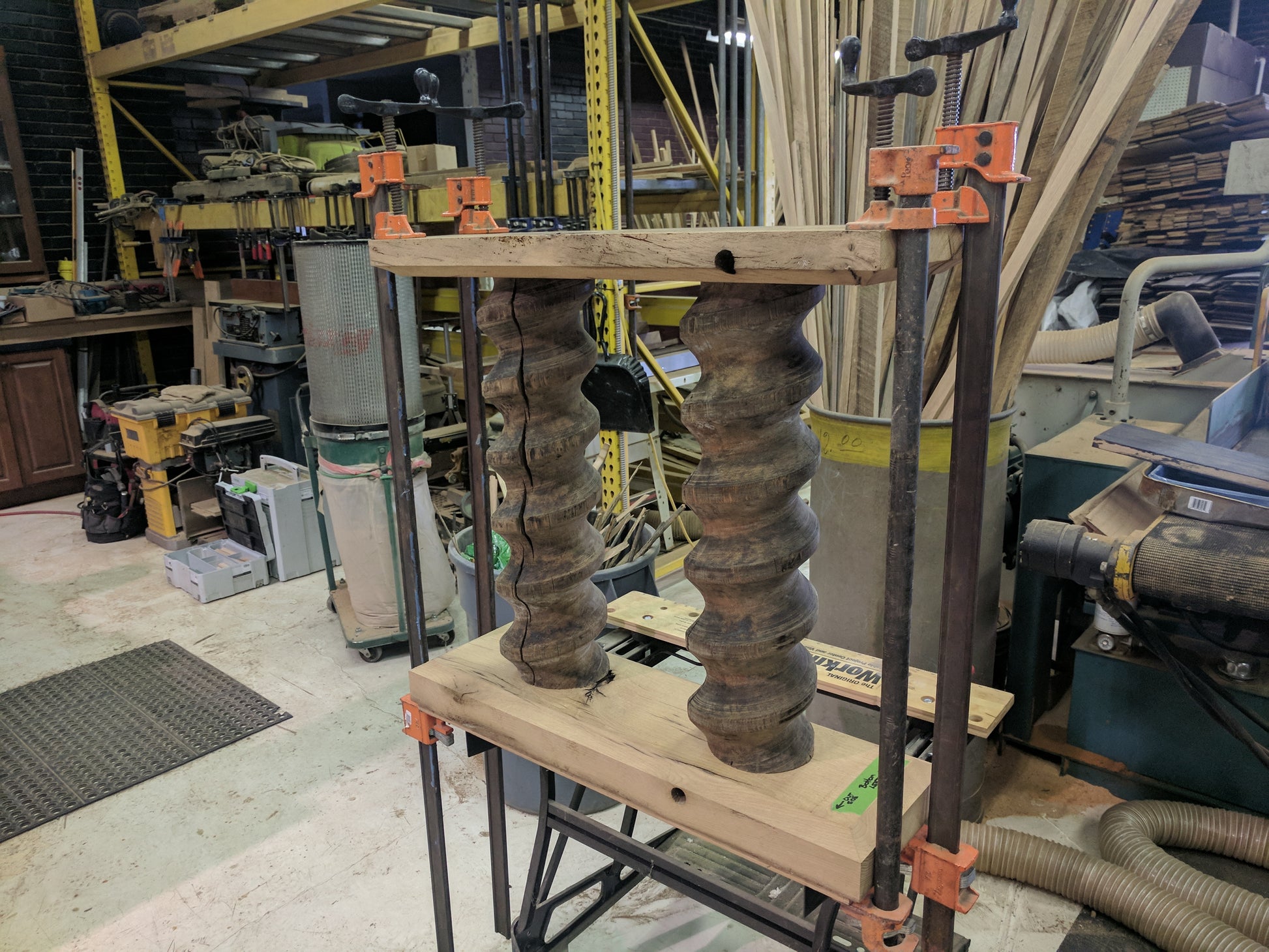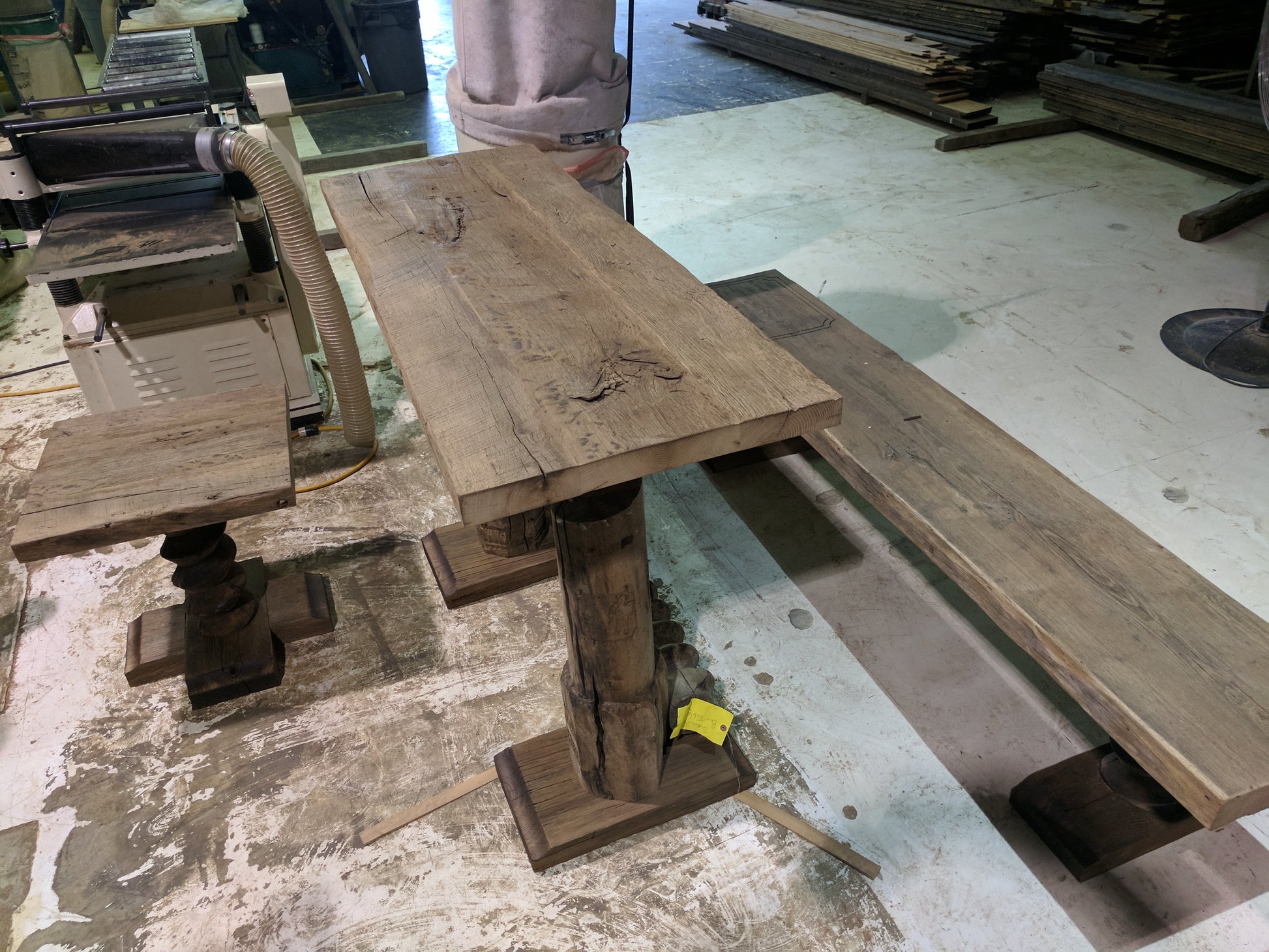1
/
of
14
Charlotte Lumber
Wine Press Screws - Hand Carved - 17th Century
Wine Press Screws - Hand Carved - 17th Century
SKU:
Out of stock
Quantity
Regular price
$800.00 USD
Regular price
$1,200.00 USD
Sale price
$800.00 USD
Shipping calculated at checkout.
Couldn't load pickup availability
Overview
Hand carved wooden wine press screws from Austria, Croatia, Sylvania and France, Some are dated back to the 1650s and the newest being 160 years old.
Product Details
- Colors: Brown, Tan / Beige, Coffee, Chocolate, Cinnamon, Tawny, Walnut, Mocha, Umber, Expresso
- Uses: Table Legs, Entryway columns, Newel Post
-
Year Built: 17th Century - 1650s
- Material: pear wood 80%, cherry 15%, french oak 5%
- Location: Charlotte, NC USA
Dimensions
- Length: 8ft to 14ft
- Width: 5-9 inches
370 Years Ago
In the 17th century, wine press screws were an essential tool for winemakers during the wine production process. These devices were used to extract the juice from crushed grapes by applying pressure to the grape mash in a controlled manner. Wine press screws, also known as wine presses or grape presses, played a critical role in the production of wine, especially in regions where traditional winemaking methods were prevalent.
- Design and Function: Wine press screws during this era had a basic but effective design. They typically consisted of a large wooden or stone vat or container, often circular or square in shape. The vessel was filled with crushed grapes, which were obtained by either treading the grapes with feet or crushing them with other tools. At the bottom of the vat, there was a mechanism that allowed for pressing the grape pulp. A large screw, operated manually, was turned to apply pressure to the grapes. As the screw was turned, it pushed a wooden or metal plate downward, squeezing the grapes and extracting the juice.
- Materials: These wine press screws were commonly made of wood, stone, or metal, depending on the resources available in the region and the craftsmanship of the winemaker. The pressure plates were made of the same materials to withstand the force required for pressing the grapes.
- Labor-Intensive: Using these wine press screws was a labor-intensive process. It often required the effort of multiple individuals, as turning the screw and maintaining consistent pressure on the grapes was physically demanding work.
- Control Over Pressure: Winemakers had to be skilled in operating these presses to ensure that the juice was extracted without crushing the grape seeds or skins, which could release unwanted bitterness and astringency into the wine. This required a delicate balance and knowledge of the winemaking process.
- Regional Variations: The design of wine press screws could vary from region to region, reflecting local winemaking traditions and available materials. The size of the presses also varied based on the scale of winemaking operations.
- Evolution of Wine Presses: Over time, wine press technology evolved. In the 17th century, some regions were still using traditional screw presses, but hydraulic presses, which used water or hydraulic power for pressing, were developed and gained popularity in the centuries that followed. These hydraulic presses allowed for more precise control over pressure and were less physically demanding to operate.
Today, modern wineries use sophisticated equipment for pressing grapes, often utilizing hydraulic or pneumatic presses, which provide precise control over pressure and are more efficient. However, the use of traditional wine press screws, albeit in a limited context, still persists in some small-scale or artisanal winemaking operations that aim to preserve historical winemaking techniques.
Share
